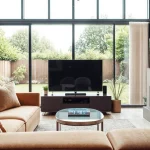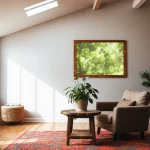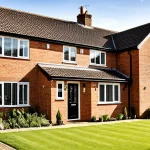Key Cultural and Historical Influences on British Home Life
British culture deeply shapes the way homes are designed and experienced. The history of British homes reveals a preference for sturdy, practical architecture that respects tradition. From Tudor timber framing to Victorian bay windows, these features reflect a long-standing appreciation for craftsmanship and heritage. This historical influence fosters a strong link between past and present in British home design preferences.
Home traditions in Britain emphasize comfort and security, viewing the home as a sanctuary from the outside world. This concept is rooted in cultural traditions that celebrate domesticity and family bonding. Practical elements such as fireplaces and cozy nooks illustrate the importance of warmth and relaxation, reinforcing the home’s role as a personal refuge.
Also read : How Does Home Design Impact Well-Being in the UK?
Additionally, British literature and media play a significant role in shaping ideas of coziness and belonging. Stories from classic authors often feature intimate home settings, promoting ideals of warmth and togetherness. Popular British media continues to highlight these themes, showing how home life intertwines with national identity and emotional wellbeing. Thus, British culture and history profoundly influence notions of home, making it a cherished cornerstone of daily life.
Climate and Environmental Factors in British Home Design
Understanding how nature shapes our living spaces
Have you seen this : How Can You Maximize Storage in a Small English Home?
The British climate is famously unpredictable, marked by frequent rain and chilling cold. This reality profoundly influences home design, emphasizing cozy interiors that provide refuge from harsh weather. To counter dampness and cold, traditional British homes often feature thick walls, which act as insulating barriers to retain heat. Small windows are another hallmark, reducing heat loss while managing the limited daylight effectively.
Fireplaces emerge not only as aesthetic focal points but as practical solutions. They provide vital warmth during long, cold months and contribute to the inviting ambiance characteristic of British homes. These elements collectively reflect how the weather influence has driven architects to prioritize comfort and functionality.
Homeowners and designers understand these factors keenly, leading to spaces where warmth and shelter meet style. This blend fosters environments that feel secure and nurturing, proving that good home design in Britain is as much about adapting to nature as about personal taste. Whether renovating or building anew, considering these climate-informed design choices can ensure a home feels truly comfortable year-round.
Hallmarks of Cozy British Interiors
Cozy interior design in British homes is defined by an inviting atmosphere that emphasizes warmth and comfort. Central to achieving this effect is the use of fireplaces and wood-burning stoves. These traditional elements serve not only as sources of heat but also as captivating focal points that naturally draw people together, reinforcing a sense of homeliness familiar in British home décor.
Soft furnishings further enhance this atmosphere. Throws, cushions, and rugs—all in layered textures and rich fabrics—add both visual interest and tactile pleasure. Their careful placement invites relaxation and a cozy, lived-in feel that British interior design champions.
Colour schemes play a vital role too. Warm tones such as deep reds, muted browns, and creamy neutrals dominate, deliberately selected to complement ambient lighting. Gentle, diffuse lighting strategies—using lampshades and candles—create a soft glow that accentuates the space’s warmth, transforming even the chilliest days into comforting retreats.
Together, these elements make cozy British interior design uniquely inviting, blending tradition with a purposeful sense of ease and contentment.
Lifestyle Habits and Societal Values
Exploring British ways of living and their social foundation
The British lifestyle is deeply rooted in traditions that foster a strong sense of home and community. Central to this is the practice of home-centred socialising, exemplified by afternoon tea and family gatherings. These events create spaces for connection while valuing intimacy and comfort over public spectacle.
Privacy and personal retreat are highly valued in British society, reflecting a cultural preference for solitude and sanctuary within the home. This emphasis on personal space encourages a lifestyle where homes are sanctuaries, offering respite from the fast pace of daily life. Such environments are carefully curated to balance social interaction and peaceful retreat.
Recently, concepts like “hygge”—originating in Denmark and signifying coziness and contentment—have been embraced and adapted within Britain. This adoption reflects a shared desire for warmth, comfort, and meaningful moments in domestic life. Integrating these ideas has reinforced British social values that prioritize well-being and a secure sense of belonging within the home.
Thus, British social values intertwine tradition, privacy, and a modern appreciation for comfort to shape a distinctive lifestyle centred on the essence of home.
Expert Insights and Iconic Examples of Cozy British Homes
small yet inviting nuances
Expert opinions on what defines a cozy British home often point to a blend of tradition, comfort, and understated elegance. Interior designers emphasize warmth created through layered textiles, muted color palettes, and intimate lighting. Historians add that this coziness is deeply rooted in British architectural heritage, reflecting a lifestyle prioritizing shelter and conviviality.
Iconic British interior examples include countryside cottages with their exposed wooden beams, open fireplaces, and patterned fabrics, which evoke a sense of rustic charm and history. Georgian townhouses offer a different take: tall windows, sash designs, and built-in bookcases add a subtle grandeur while maintaining a snug atmosphere through thick curtains and soft rugs.
Modern British homes integrate these traditional elements with contemporary functionality. Designers focus on creating inviting living spaces using practical yet aesthetic furniture arrangements, combined with personal touches that give an individualized feeling of comfort.
Visual features such as warm wood floors, vintage accessories, and soft lighting unify these examples. Practical elements including compact layouts and efficient heating systems make the cozy British style achievable year-round, blending visual charm with everyday livability.








